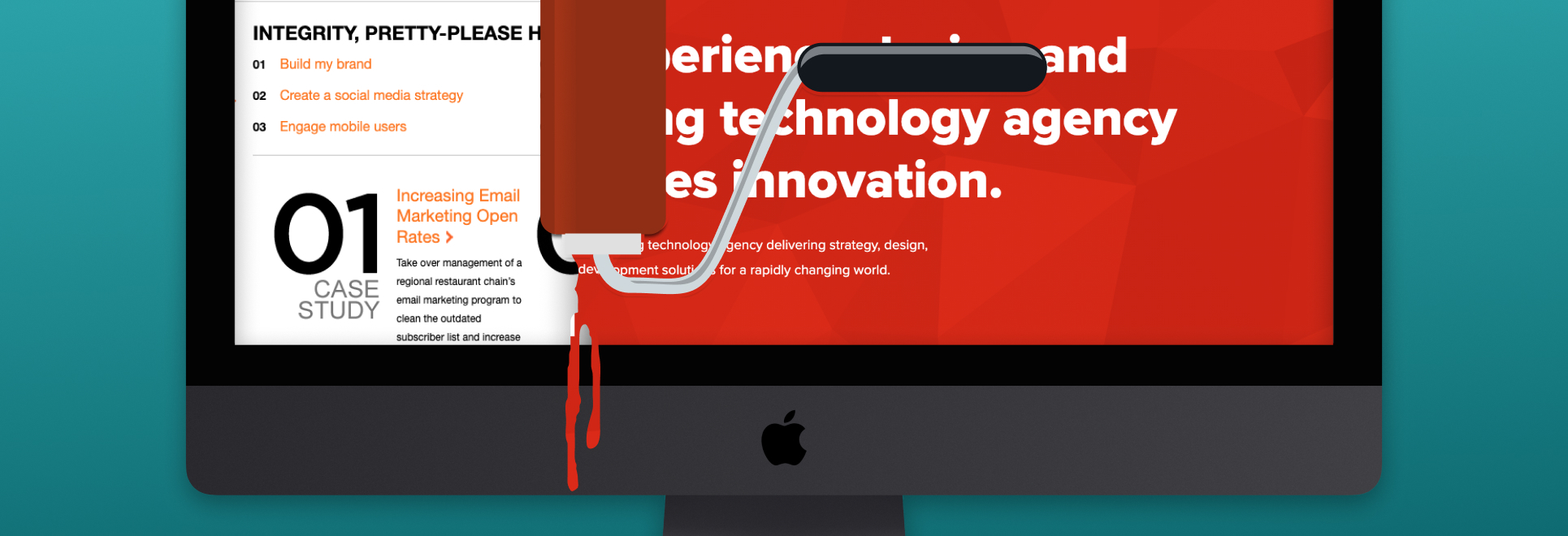
While there is good art and bad art, how someone takes in an artistic piece is often subjective. Whether it’s a painting, a poem, a dance, you’re creating a feeling that some people get and others don’t. Of course there are best practices and qualities we use to judge and critique art, but to the average individual, art is often personal.
It’s easy to forget that UX/UI design is not art. While design for a new website, app or product may emit emotions, that’s not its ultimate drive.
As a refresher, objective design is not influenced by personal feelings or opinions, whereas subjective design is based on personal feelings or opinions. Objective design means the product must be based on facts, data and how real people learn or use things. It can’t just be about “making something look pretty.”
When you create design to be used digitally, you must make it easy to use and understand. How can this design help solve a problem or reach a goal? Designs should also utilize UI/UX best practices, following a common set of standards and behavior patterns, which are not always unique.
When sitting down to create an objective design, it’s helpful to break down the process into building blocks where one decision drives the next deliverable.
Each of these deliverables is based on facts and goals that are agreed upon between the creative team and client (if separate). These facts and goals may include a combination of the following:
If in the process of a site redesign as opposed to a new website build, it can be useful to review how users have previously interacted with the site (you likely covered this already during your UX audit).
These analytics metrics can be especially useful when designing things such as the information architecture, page structure, and calls to action.
In addition to evaluating past behaviors, make sure to implement UX best practices in everything you design. Remember: objective design means your work should meet a handful of requirements that make it user-friendly:
Of course, beyond factoring in user behaviors and best practices, the design must work for your client’s specific objectives. If they’re a salon looking to book appointments, then it wouldn’t make sense to drive users to a “Learn More” call to action. If they’re an interior design company and the number-one service they offer is for kitchens, you wouldn’t lead the navigation with “Bathrooms.”
By identifying these goals before any design work has begun, you can work to keep them at the forefront of your mind while creating their site or app.
Creating a new design is one thing — but showing it to the client is another.
Because UX/UI design is (you guessed it) objective and not subjective, it’s vital to keep your design presentation in line with that mission. How something looks is important, but how it operates is crucial to user experience, and you may need to reinforce that value with your client. Design presentations will likely be split up depending on which elements are being presented:
Let’s walk through a simple process for ensuring everyone reviewing objectives designs are on the same page.
First, remind all of those in the room of the goals set up at the beginning of the project and walk stakeholders through the decisions that have already been made. This mitigates the risk of clients getting confused or hung up on details that were discussed in previous meetings.
Next, describe how the design you are about to present aligns with those goals and decisions. For non-designers, it can be difficult to review designs as anything but subjective. The goal is to keep everyone focused on those best practices, analytics and objectives that we talked about earlier.
Only after all of those details have been established should you begin the actual design presentation. Make sure that each step of the way, you’re confirming the above decisions and goals and presenting with facts, whether it’s explaining why a button is a particular color or why a CTA is located in a particular location on the page.
Remind the client that goals are reached by presenting the information in a way the user wants or is looking for it, such as explaining that a layout is used because analytics confirms that this content is what most users are looking for, etc.
The more you can remind the client of the goals, analytics and user behavior — whether it’s during the presentation or further down in the design/build process — the better chance you have for success.
---
Looking for UX/UI design expertise for your next website, app or product? Integrity is a full-service design/build agency and we’re here to talk.

Is it time for a website redesign? Let our St. Louis web design team help you update your website for optimal performance.